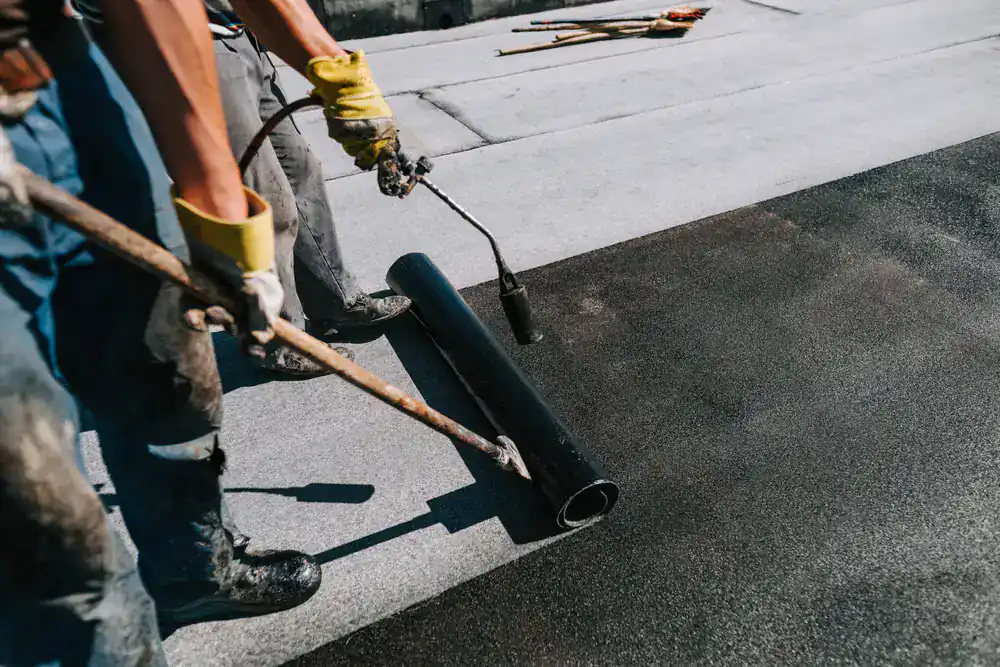
Hear from Our Customers
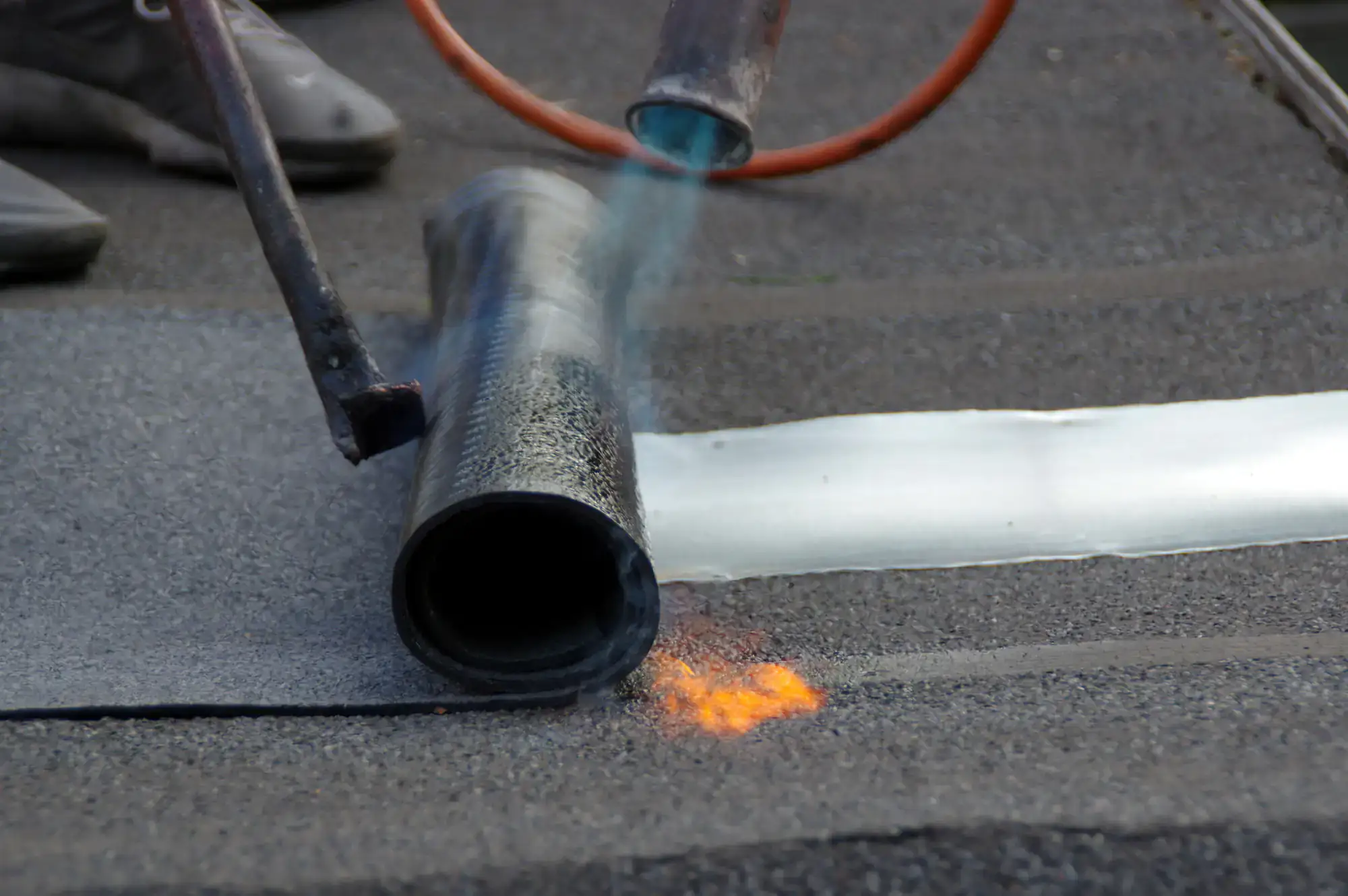
Your flat roof stops being a constant headache. Water flows off instead of sitting there destroying your membrane. You get 15-20 years of protection instead of patching leaks every few seasons.
The torch-applied seal creates a seamless barrier that handles Long Island’s freeze-thaw cycles without cracking. No more emergency calls during storms. No more ceiling stains or mold issues from water infiltration.
When it’s done right, you forget your roof exists—which is exactly how it should be.
We’ve handled thousands of torch down installations across Nassau and Suffolk County since 2002. We’re fully licensed, bonded, and insured because this work requires precision and accountability.
Long Island’s coastal climate is tough on roofs. Salt air corrodes metal components. Summer heat causes thermal expansion. Winter ice creates structural stress that inferior installations can’t handle.
We’ve seen what works and what fails. That experience shows in every job we complete—and in the warranties we stand behind.
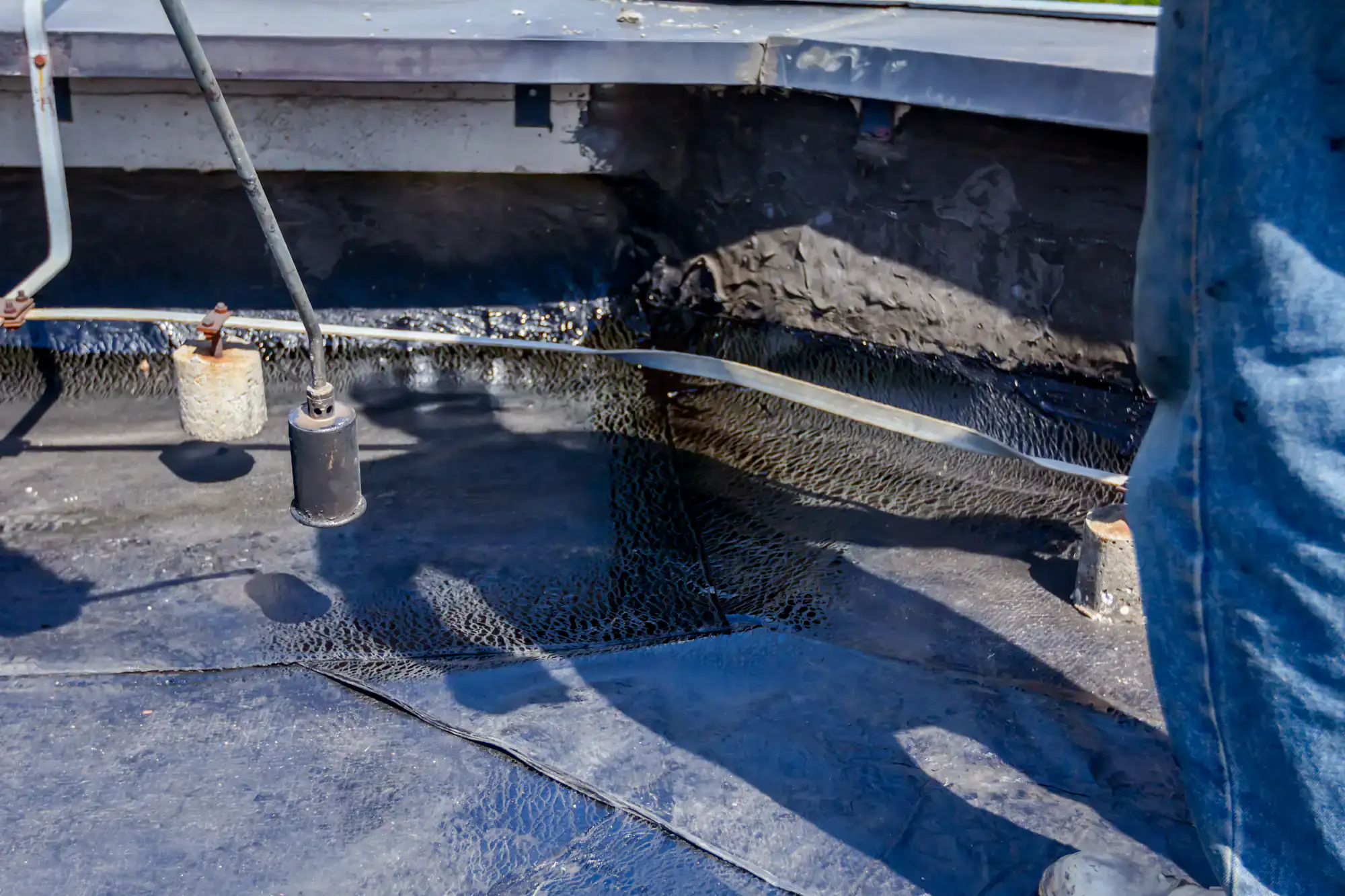
We start with a thorough roof inspection to identify drainage issues and structural concerns. Poor drainage kills flat roofs faster than anything else, so we address that first.
The modified bitumen membrane gets rolled out and heated with a propane torch to activate the adhesive backing. This creates a molecular bond with the substrate—not just surface adhesion that peels away over time.
Each seam gets torch-welded to form one continuous waterproof barrier. We pay special attention to penetrations, edges, and transitions where most leaks start. The final granulated cap sheet provides UV protection and impact resistance.
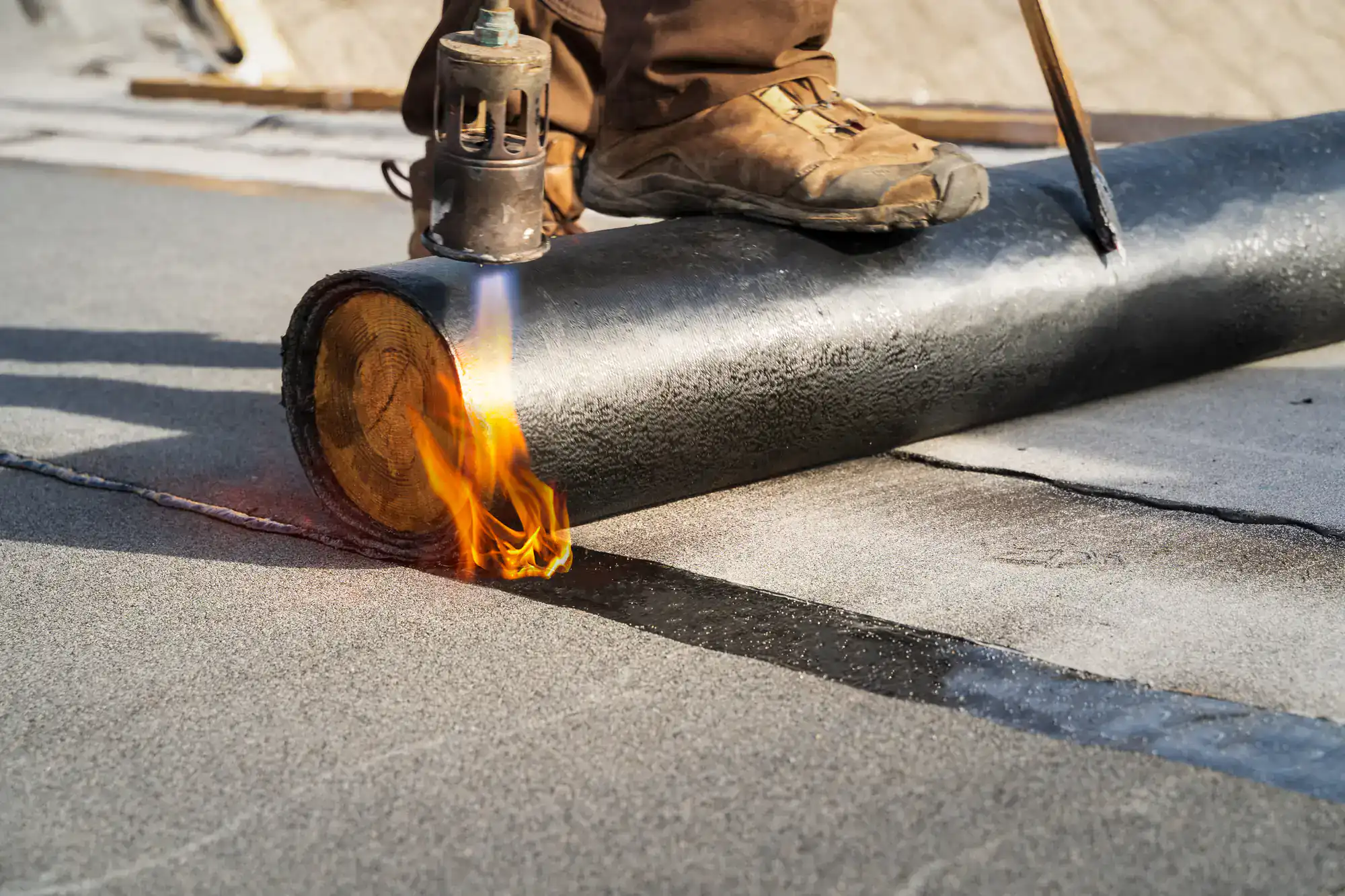
Ready to get started?
Modified bitumen systems work exceptionally well in Long Island’s variable climate. The material expands and contracts with temperature changes without losing its seal—crucial for our hot summers and cold winters.
Salt air from the nearby Atlantic accelerates corrosion on metal roofing components. Torch down systems use fewer metal fasteners and rely more on adhesive bonds, reducing corrosion points that cause premature failure.
We typically install SBS modified bitumen for Brookhaven properties because it handles temperature variations better than APP systems. The rubber-like flexibility prevents cracking during freeze-thaw cycles that are common here from December through March.
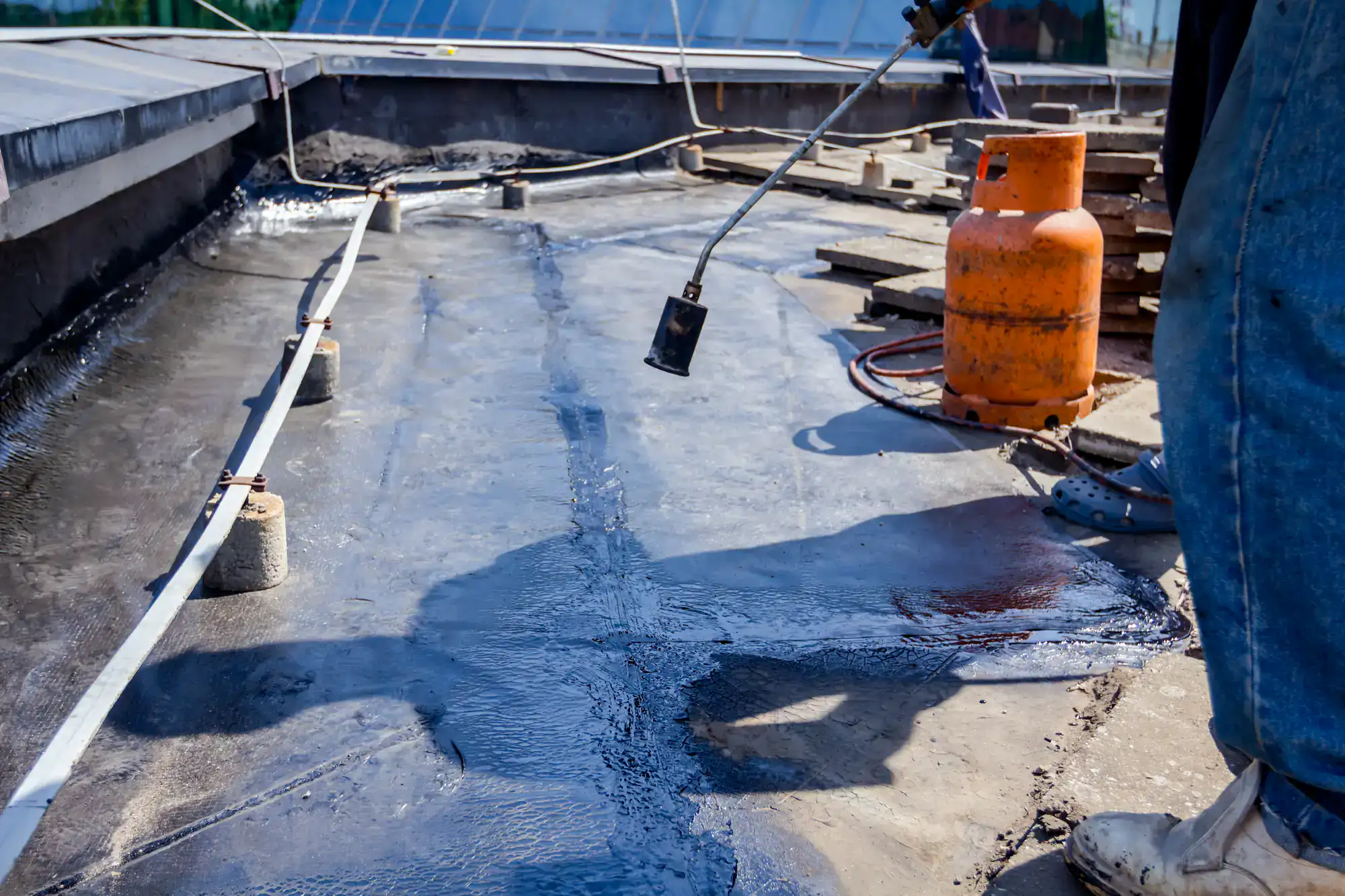
Properly installed torch down roofing typically lasts 15-20 years in Long Island’s coastal environment, sometimes longer with regular maintenance. The key factors are quality installation and addressing drainage issues upfront.
Long Island’s salt air, temperature swings, and heavy snow loads are tough on roofing materials. Modified bitumen handles these conditions better than most alternatives because it’s designed to flex with thermal movement without losing its waterproof seal.
We’ve seen torch down roofs perform well for decades when they’re installed correctly and maintained properly. The investment in quality materials and professional installation pays off in longevity.
APP (atactic polypropylene) creates a plastic-like membrane that performs well in extreme temperatures and offers superior UV resistance. SBS (styrene-butadiene-styrene) creates a rubber-like sheet with better flexibility and weather resistance.
For Long Island properties, we typically recommend SBS because it handles our variable climate better. The rubber-like flexibility prevents cracking during freeze-thaw cycles, which are common here from late fall through early spring.
APP works better in consistently hot climates where UV exposure is the primary concern. Since Long Island gets both temperature extremes and significant weather variation, SBS is usually the better choice for long-term performance.
Sometimes, but it depends on the condition of the existing roof and local building codes. If the current membrane is structurally sound with no moisture trapped underneath, an overlay installation might be possible.
We always inspect the existing roof thoroughly first. Signs of moisture damage, structural issues, or multiple layers of old roofing usually require complete tear-off and replacement. Trying to save money with an overlay over compromised materials just creates bigger problems later.
Building codes in Nassau and Suffolk County limit the number of roof layers allowed. We ensure all installations meet current code requirements and manufacturer specifications for warranty coverage.
Proper drainage is critical for flat roof longevity. Standing water for more than 24-48 hours will destroy any roofing membrane and void manufacturer warranties. We address drainage during every installation.
Sometimes we can add drains at problem areas or install tapered insulation to direct water flow toward existing drains. In other cases, the roof structure needs modification to create adequate slope for drainage.
We also inspect and clear existing drains, check for proper overflow drainage, and ensure gutters and downspouts can handle the roof’s water volume. Poor drainage kills more flat roofs than material failure.
Torch down roofing requires minimal maintenance compared to other flat roof systems, but regular inspections are essential. We recommend professional inspections twice yearly—spring and fall—to catch small issues before they become expensive problems.
Keep drains clear of debris, especially after storms when leaves and branches can cause blockages. Check for any punctures from falling branches or foot traffic. Look for signs of membrane separation at seams or edges.
Most manufacturers require documented maintenance records to maintain warranty coverage. We provide maintenance services and keep detailed records to protect your warranty and extend your roof’s lifespan.
Torch down roofing typically costs more upfront than basic EPDM rubber but less than premium TPO or PVC systems. The key is looking at long-term value, not just initial cost.
Modified bitumen systems often last longer than single-ply alternatives in Long Island’s climate, which means lower cost per year of service. They’re also easier to repair when damage does occur, reducing long-term maintenance costs.
We provide detailed estimates that break down material and labor costs. The investment in quality installation pays off through decades of reliable performance and fewer emergency repair calls.